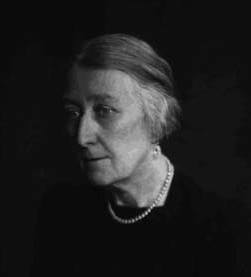 Marjory Stephenson (1885-1948). Much of what we know about metabolism (the buildup, breakdown, and recycling of biological molecules) was first worked out in bacteria, and Stephenson literally wrote the book on it! For decades after its initial release in 1930, Bacterial Metabolism was the textbook to go to if you wanted to learn more about the subject.
Marjory Stephenson (1885-1948). Much of what we know about metabolism (the buildup, breakdown, and recycling of biological molecules) was first worked out in bacteria, and Stephenson literally wrote the book on it! For decades after its initial release in 1930, Bacterial Metabolism was the textbook to go to if you wanted to learn more about the subject.
But Stephenson’s path to becoming a biochemical expert wasn’t straight-forward. Born in Cambridgeshire, England in 1885, she studied “Natural Sciences” (including chemistry, physiology, and zoology) at Newnham College (a women’s-only part of Cambridge University). She had planned on going on to study medicine, but couldn’t afford it, so became a domestic science teacher instead. This career was unfulfilling for Stephenson, who jumped at the chance to get back to the bench when biochemist Robert Plimmer asked her to join his lab at University College London.
For a while, her career future was looking bright – under Plimmer’s tutelage she studied fat metabolism, taught nutrition, and made an impression on the Biochemical Club (now the Biochemical Society), which awarded her a Beit Memorial Fellowship. But, once again, her plans were interrupted – this time by war. She worked for the Red Cross in WWI where her experiences and contributions later led her to become a dame – and a pacifist.
After the war she returned to her studies at Cambridge, where she helped develop a technique to isolate enzymes (proteins that help speed up chemical reactions) from bacterial cells. Stephenson and her colleague Leonard Stickland became first people to carry out this tricky feat, isolating an enzyme called lactic dehydrogenase (LDH) from E. coli in 1928. This molecule may sound familiar because LDH is commonly tested for as a “biomarker” of tissue damage (such as that caused by a heart attack).
In 1945, Stephenson and crystallographer Kathleen Lonsdale became the first women elected Fellows of the Royal Society. She co-founded the Society for General Microbiology and became its second president in 1947. Tragically, she died from cancer the following year. The Society for General Microbiology recognizes her contributions with a biennial “Marjory Stephenson” memorial lecture.
Photo credit: Newnham College Cambridge
[sharethis-inline-buttons]
